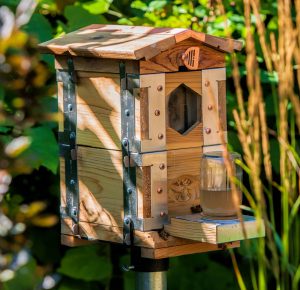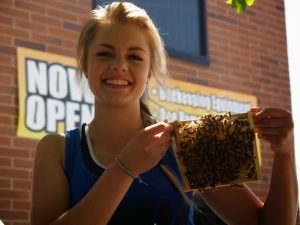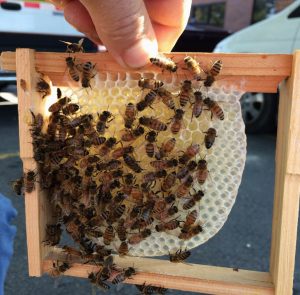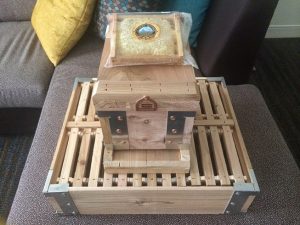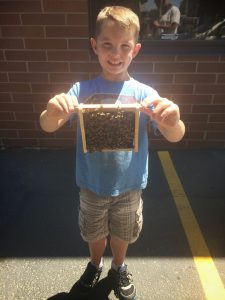How many beekeepers were a part of the USDA study the last few years where they randomly testing hives all across the country for chemicals and diseases? This year the study concluded that chemicals found in the hives at toxic levels were added by the beekeeper! Sad revelation really.
In testing beekeepers a few questions can be asked:
1) How much honey do you harvest yearly?
2) Do you know how to raise your own queens?
3) Do you medicate your colonies?
The answer to these questions says a lot about the beekeeper. Most beekeepers even beginners have a focus on honey production. Almost 100% of beekeepers when questioned do not know how to raise their own queens. Cycles, what to do when and what to watch out for, and on. This study also revealed that beekeepers are polarized with medication, most experienced beekeepers medicate and most new beekeepers do not.
Myths in beekeeping abound and many beeks (a term to identify beekeepers) each year are taught how to enter the ranks, but inadvertently become “honey tax lords”.
Revenue for honey sales is usually not enough to cover the costs associated with beekeeping. There are expenses for license fees, time, travel, hive equipment, bees, and bees again when they abscond or swarm or die, then extractor, uncapping tool, rental fees, buckets, strainers, bottles, suits, gloves, medication, hives lost to vandalism and theft, feed, pollen substitutes, mite related issues, then almost complete loss due to disease, and the list continues and grows even for the commercial operation.
We must change the way we care for bees. It is possible to teach new beekeepers of all ages how to raise queens from just a couple of hand-sized frames of eggs and bees. The Mini Urban Beehive makes this teaching easy. First, teach to care for the bees and help them grow and what is required. Next, teach them to divide a colony early in their education. Feeding is essential to increased bee populations and for tiny mating nucs. Don’t have an eye on hundreds of colonies when you are investigating or initially learning, just learn! Placing your hives in full sun, especially in Utah’s summers without a very close water-source is silly. Arnia claims when the humidity drops to 50% in a hive, not one egg will hatch. It is just as silly as setting up a tent in an open field at 100 degrees and hopping inside thinking it is comfortable – it isn’t for us and nor is it for the bee. The natural habitat of a bee is in the forest, inside a tree.
A tree is not equivalent to a deep Langstroth hive; it is smaller than a medium actually. Regularly beekeepers pinch their queens and replace them because of a variety of colony problems. In nature, any swarming colony with their attending queen is good enough inside a tree. Only some queens are good enough for a deep hive. Do you know how to raise your own queen, or are you going to buy new ones for $35 and up in hopes that one solves whatever problem you face?
Extracting equipment too is designed for commercial beekeeping, not for the needs of a backyard hobbyist. Most jump here and say, well, you are dead wrong. When you look at capped honey you know it is quality control maintained by the honey bee. Compared to a bottle of extracted honey, the quality control was transferred to the beekeeper and their quality control standards. Was the extractor sterilized prior to use? Were the buckets and strainers clean or only used for honey? Did any honey fall on the floor? Are there any bee parts, or guts? Was any uncapping done with capped brood (larvae) still in the frame? Was water, sugar water, or corn syrup added?
Drawn and capped comb honey can be sold while still in the mini wood frames, so the consumer can extract. You may think that is stupid! Well, no it isn’t. To extract is simple, take the clean attractive comb, place it into a baggy, seal it, squish it, pop holes in the baggy and let it drain. Or, break it and put it into one of your straining devices from your kitchen. This takes a bit longer but extraction is FREE and done by others after you sell it. Most families with children would love to be a part of this process. This way the consumer knows exactly what they are getting. The 1lb – 1 1/2lb mini frames of honeycomb sell for $20 to $25 each in Utah, higher prices are reported in other cities and locations, larger the city higher the price. Tourist locations are also selling high priced honeycomb. Most comb honey producers use equipment that requires additional expense to prepare the super for placement on the hive again. Nope, not this system. The beekeeper can visit the apiaries, take whatever honeycomb is capped and ready, place it into a baggy, and walk up to the food stand and it is ready for sale. Frames can be placed back to the hives for bee cleaning and further comb production or new frames can be added.
Reduce the costs, improve the product, and learn from what you have done.

